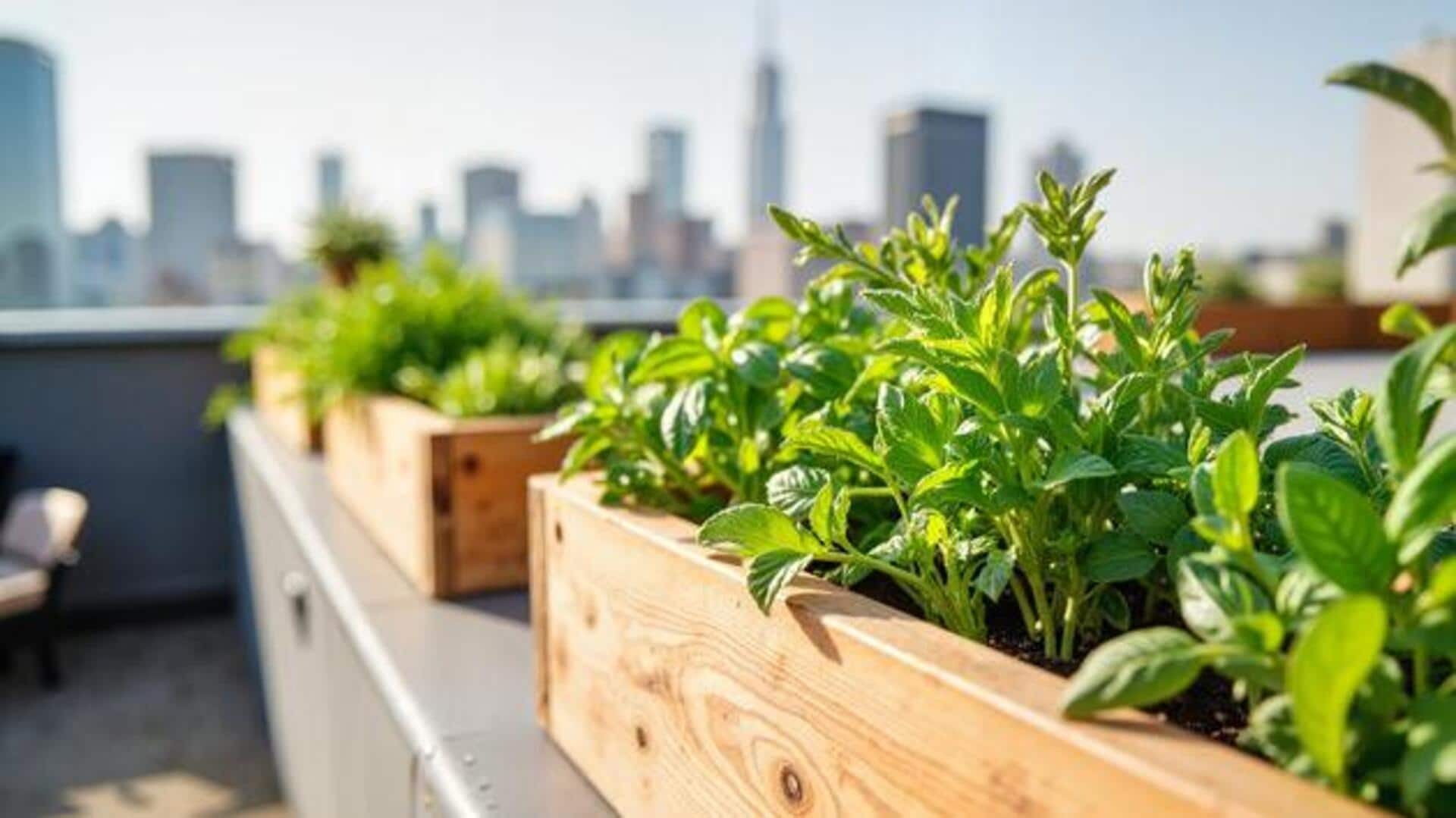
How to design an eco-friendly roof garden
What's the story
Roof gardens are increasingly being adopted in Africa as a more inexpensive way to save energy. Such gardens minimize heat absorption, thus reducing cooling costs and enhancing building efficiency. By making use of available rooftop space, people can establish green spaces that play a role in protecting the environment while also providing economic advantages. Here's a look at the different ways to implement roof gardens across the continent.
Tip 1
Selecting suitable plants
Choosing the right plants is the key to a successful roof garden. Go for drought-resistant species that require little water and maintenance. Native plants are also usually well-acclimatized to the local climate and can thrive easily with less intervention. Succulents, herbs, and some grasses are popular choices because of their resilience and ability to withstand harsh conditions.
Tip 2
Efficient irrigation systems
Implementing an efficient irrigation system is key to maintaining a healthy roof garden without wasting too much water. Drip irrigation systems are perfect as they deliver water directly to the roots of the plant, minimizing evaporation and waste. Rainwater harvesting systems can also be integrated to collect rainwater for irrigation purposes, cutting down on reliance on municipal water supplies.
Tip 3
Lightweight soil mixtures
It's important to opt for lightweight soil mixtures to prevent overloading the building's structure. These specialized mixtures consist of organic materials, such as compost, mixed with lightweight aggregates such as perlite or vermiculite. This combination not only provides adequate drainage but also provides the necessary nutrients for plants to grow. And, most importantly, it does so without adding too much weight on the roof.
Tip 4
Insulation benefits of roof gardens
Roof gardens provide natural insulation benefits by minimizing heat transfer through the roof surface. The vegetation layer soaks up sunlight, reducing indoor temperatures on hot days and lessening the need for air conditioning systems. This natural cooling effect can result in energy savings of up to 30%, making it an attractive option for buildings in warm climates.
Tip 5
Community involvement opportunities
Engaging local communities in creating roof gardens can foster collaboration and shared responsibility towards sustainable practices. Community projects not only enhance social cohesion but also provide educational opportunities about environmental conservation and urban agriculture techniques. Involving residents in planning, planting, and maintaining these spaces encourages long-term commitment towards greener cities across Africa.